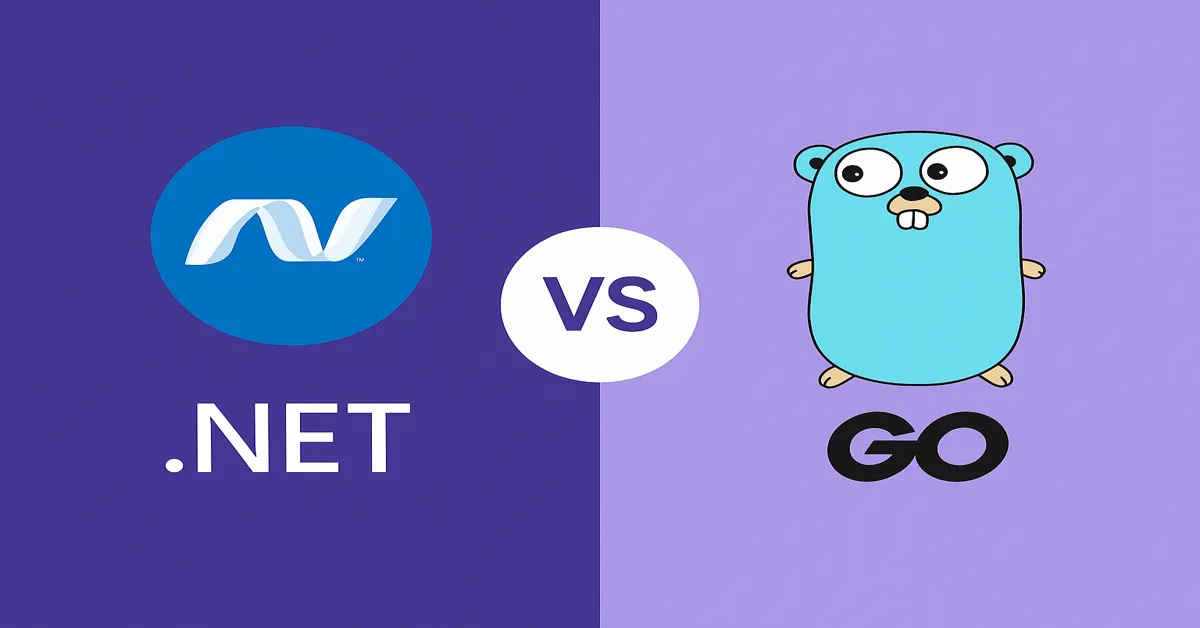In the rapidly evolving world of software development, the choice of programming language or framework can significantly influence project trajectory, scalability, and long-term maintainability. Among the many available technologies, .NET and Go (commonly referred to as Golang) stand out as powerful yet fundamentally different tools in a developer’s arsenal. Although both serve modern programming needs effectively, their architectures, philosophies, and ecosystems reflect distinct priorities and use cases – Difference Between .NET & Golang.
This article dives into a comprehensive, updated analysis of the differences between .NET and Golang. It is designed to inform developers, project managers, and decision-makers seeking clarity on which tool better suits their specific needs.
Historical Context and Development Philosophy
.NET Framework
Microsoft introduced the .NET Framework in the early 2000s as a proprietary development platform. With the release of .NET Core and, more recently, the unified .NET 5/6/7, the framework has evolved into an open-source, cross-platform environment supporting multiple programming languages, including C#, F#, and VB.NET.
The original intent of .NET was to provide a managed environment with robust tooling, seamless Windows integration, and a consistent object-oriented programming model. Over time, Microsoft repositioned .NET as a platform-agnostic framework capable of powering cloud, web, mobile, desktop, and IoT applications – Difference Between .NET & Golang.
Golang
Go, or Golang, emerged from Google in 2009 as a statically typed, compiled language designed for simplicity, concurrency, and performance. Created by notable engineers including Robert Griesemer, Rob Pike, and Ken Thompson, Go was developed in response to perceived shortcomings in other systems programming languages like C++ and Java.
Golang prioritizes simplicity in syntax, fast compilation, and efficient concurrency, making it especially attractive for microservices, network tools, and cloud-native development.
Syntax and Language Design
.NET (especially C#) and Golang exhibit stark differences in syntax, readability, and complexity.
C# (Primary Language of .NET)
C# is object-oriented, feature-rich, and expressive. It supports advanced constructs like generics, LINQ (Language Integrated Query), asynchronous programming via async/await, and pattern matching. While powerful, its syntax can be verbose, and mastering the framework’s expansive libraries requires significant learning.
public class Person {
public string Name { get; set; }
public int Age { get; set; }
}Go
Go embraces minimalism. It avoids inheritance, uses interfaces implicitly, and discourages complex metaprogramming. It also enforces formatting via gofmt, ensuring uniform code aesthetics across teams.
type Person struct {
Name string
Age int
}Go’s simplicity makes onboarding quick and keeps the codebase approachable. However, its lack of generics (until Go 1.18) and more rigid type system were historically seen as limitations.
Runtime and Performance
Performance is a critical factor, especially for backend services and high-throughput systems.
.NET
.NET uses the Common Language Runtime (CLR), a virtual machine that compiles intermediate code (IL) to native code via Just-In-Time (JIT) compilation. This adds overhead but allows runtime optimizations and dynamic features. The advent of Ahead-of-Time (AOT) compilation in .NET 7 has improved startup times and reduced memory usage, especially on constrained devices.
.NET performance has been significantly optimized over the years, with C# programs often matching or exceeding Java and Python in speed.
Go
Go is compiled directly to machine code, leading to fast startup times and low memory footprint. It features a lightweight runtime, which includes its own garbage collector and scheduler for goroutines (lightweight threads).
Go’s concurrency model—based on goroutines and channels—is more efficient than traditional threading models, making it ideal for scalable server applications.
Tooling and Ecosystem
.NET
.NET’s tooling is mature, driven by Visual Studio and Visual Studio Code. Developers benefit from powerful debugging, code analysis, and refactoring tools. Its NuGet package manager and expansive framework libraries support rapid development across multiple domains, including web (ASP.NET), desktop (WPF, WinForms), and mobile (Xamarin, MAUI).
Microsoft’s strong backing ensures long-term support, regular updates, and a broad enterprise ecosystem.
Golang
Go tooling focuses on simplicity. The Go toolchain includes built-in support for formatting (gofmt), testing (go test), and dependency management (go mod). Though less feature-rich than Visual Studio, Go tools are fast, consistent, and designed with developer ergonomics in mind.
Go’s standard library is lean but comprehensive, supporting networking, concurrency, and encoding out-of-the-box. While third-party libraries exist, the Go community tends to favor standard tools, reducing dependency bloat.
Cross-Platform Support
Both platforms have evolved to meet the demand for cross-platform compatibility.
- .NET: With .NET Core and the unified .NET platform, Microsoft embraced Linux and macOS, enabling developers to deploy apps on a wide range of operating systems. Docker and Kubernetes integration further bolsters .NET’s cross-platform capabilities.
- Go: From the outset, Go was designed to be cross-platform. Its static binaries can be easily compiled for various OS and architectures. Cross-compilation is straightforward, and the lack of runtime dependencies simplifies deployment.
Web Development
.NET
ASP.NET Core is the backbone of web development in .NET. It supports MVC architecture, RESTful services, Razor Pages, and Blazor for full-stack C# development. Middleware pipelines and dependency injection are first-class citizens, providing flexibility and control.
Go
Go provides the net/http package for building web servers. While minimalist, it offers excellent performance and control. Frameworks like Gin, Echo, and Fiber offer higher-level abstractions, but many Go developers prefer writing directly with the standard library for clarity and performance.
Concurrency and Parallelism
Concurrency is where the two platforms diverge significantly.
- .NET: Uses the Task Parallel Library (TPL) and async/await pattern. Thread management is abstracted via the ThreadPool, making asynchronous programming approachable but potentially harder to debug.
- Go: Offers goroutines, which are lightweight threads managed by the Go runtime. Communication via channels introduces a “share memory by communicating” paradigm, a contrast to .NET’s shared-memory model.
Go’s concurrency model is often lauded for being intuitive and scalable, especially for I/O-bound and real-time services.
Learning Curve and Developer Experience
- .NET: Offers a comprehensive ecosystem that can be daunting for newcomers. However, extensive documentation, tutorials, and community support ease the learning process. C#’s verbosity can be both a strength and a barrier, depending on developer preference.
- Go: Simplicity is Go’s hallmark. Developers often report becoming productive quickly. However, the absence of certain abstractions and design patterns can frustrate those accustomed to richer languages like C# or Java.
Community and Industry Adoption
- .NET: Strong enterprise adoption, particularly in finance, healthcare, and large-scale web applications. Backed by Microsoft, it enjoys long-term support, frequent updates, and a vast talent pool.
- Go: Widely adopted in cloud-native environments, DevOps tooling (e.g., Docker, Kubernetes), and startups. Companies like Google, Uber, Dropbox, and Cloudflare use Go for performance-critical infrastructure.
Use Cases and Suitability
Choose .NET if:
- You need rich GUI applications.
- You’re working within enterprise Microsoft ecosystems.
- You require comprehensive tooling and IDE support.
- Your project involves complex business logic and integration.
Choose Go if:
- You’re building microservices or network tools.
- Performance and simplicity are top priorities.
- You want fast builds and minimal runtime overhead.
- You’re developing in a containerized/cloud-native environment.
Future Outlook
Both ecosystems continue to evolve. .NET is embracing more open-source philosophies and performance enhancements, making it increasingly versatile. The .NET MAUI framework represents Microsoft’s push into cross-platform mobile and desktop development.
Go, on the other hand, is becoming more robust with the addition of generics and better dependency management. Its alignment with modern development trends—like microservices, containers, and DevOps—ensures its relevance in the years ahead.
Conclusion
The choice between .NET and Go hinges on your project’s specific needs, team expertise, and long-term goals. While .NET offers a rich, enterprise-grade environment suitable for a wide range of applications, Go provides a lean, efficient toolset ideal for modern, high-performance systems.
Understanding their fundamental differences empowers teams to make informed, strategic decisions—ensuring that technology becomes a lever for success, not a barrier.
Both are excellent technologies, but their strengths lie in different domains. Choose wisely, and let your architecture reflect the best tool for the task at hand – Difference Between .NET & Golang.
FAQs
1. Which is better for web development, .NET or Go?
Both are capable of building robust web applications, but the choice depends on your needs. .NET, particularly with ASP.NET Core, offers a rich ecosystem with built-in tools and a strong MVC framework—ideal for enterprise applications. Go is better suited for high-performance web servers and microservices due to its speed and simplicity, especially in cloud-native architectures.
2. Is Go faster than .NET in performance?
Generally, Go has faster startup times and lower memory usage because it compiles directly to machine code and has a lightweight runtime. However, .NET has made significant strides with AOT compilation and runtime optimizations, sometimes matching or surpassing Go in performance depending on the use case.
3. Which language is easier for beginners: C# (.NET) or Go?
Go is often considered easier for beginners due to its simple syntax and limited language features, which reduce cognitive overhead. C# offers more features and flexibility but comes with a steeper learning curve. Beginners looking for straightforward development might prefer Go, while those interested in broader capabilities may lean toward C#.
4. Can both .NET and Go be used for cross-platform development?
Yes. .NET, with its modern iterations (.NET 5 and later), supports cross-platform development on Windows, macOS, and Linux. Go was designed to be cross-platform from the start, and its single-binary deployment makes it particularly portable and easy to distribute across environments.
5. Which one is better for building microservices?
Go is often the preferred choice for microservices due to its fast execution, efficient concurrency with goroutines, and ease of deployment as static binaries. That said, .NET also supports microservices architecture well, especially with ASP.NET Core, and integrates seamlessly with Docker and Kubernetes.











